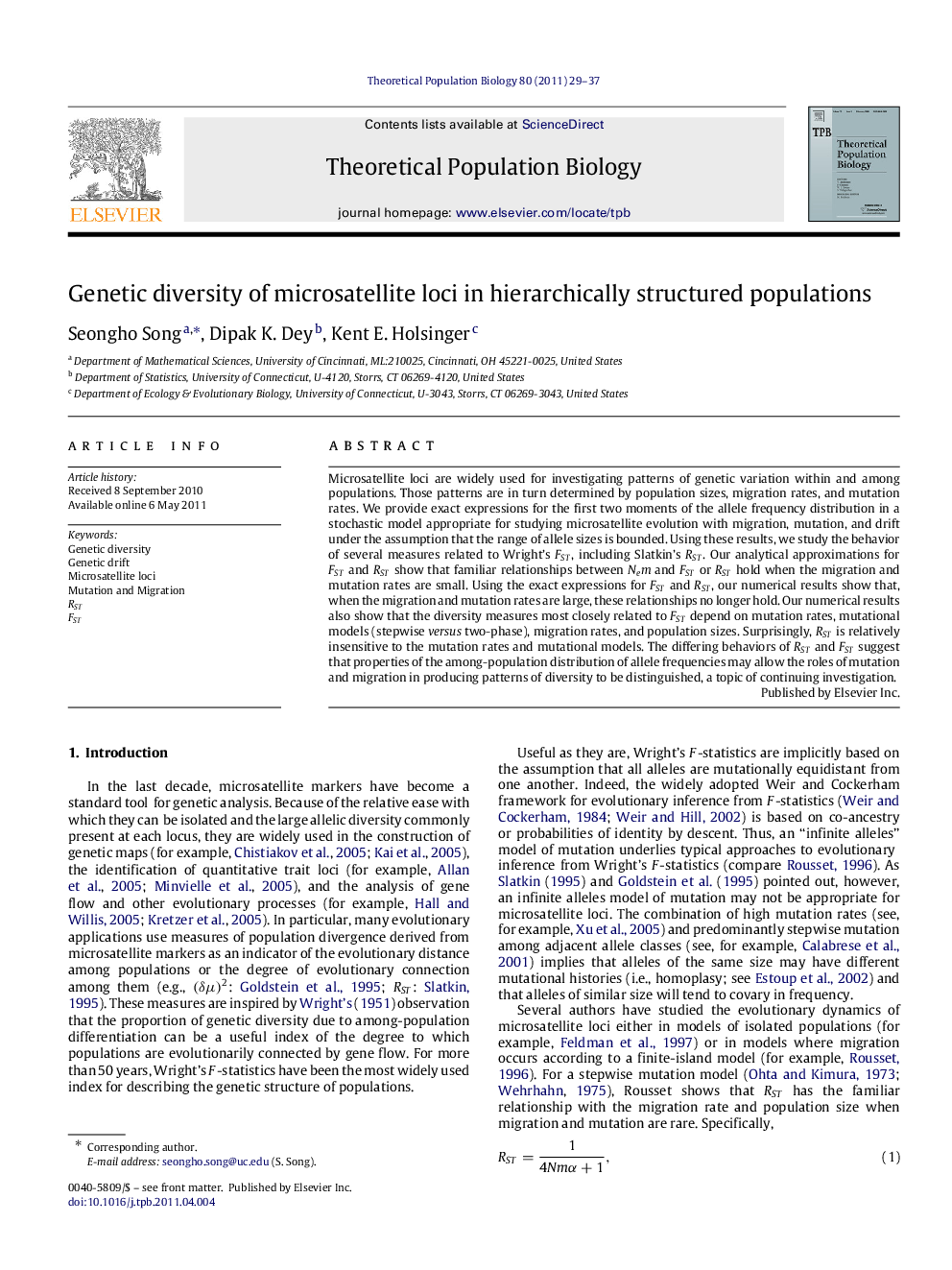| Article ID | Journal | Published Year | Pages | File Type |
|---|---|---|---|---|
| 4502575 | Theoretical Population Biology | 2011 | 9 Pages |
Microsatellite loci are widely used for investigating patterns of genetic variation within and among populations. Those patterns are in turn determined by population sizes, migration rates, and mutation rates. We provide exact expressions for the first two moments of the allele frequency distribution in a stochastic model appropriate for studying microsatellite evolution with migration, mutation, and drift under the assumption that the range of allele sizes is bounded. Using these results, we study the behavior of several measures related to Wright’s FSTFST, including Slatkin’s RSTRST. Our analytical approximations for FSTFST and RSTRST show that familiar relationships between NemNem and FSTFST or RSTRST hold when the migration and mutation rates are small. Using the exact expressions for FSTFST and RSTRST, our numerical results show that, when the migration and mutation rates are large, these relationships no longer hold. Our numerical results also show that the diversity measures most closely related to FSTFST depend on mutation rates, mutational models (stepwise versus two-phase), migration rates, and population sizes. Surprisingly, RSTRST is relatively insensitive to the mutation rates and mutational models. The differing behaviors of RSTRST and FSTFST suggest that properties of the among-population distribution of allele frequencies may allow the roles of mutation and migration in producing patterns of diversity to be distinguished, a topic of continuing investigation.
